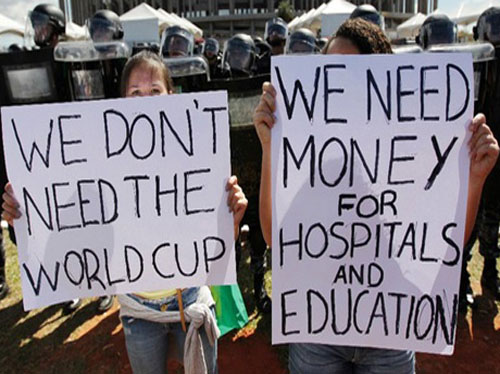Primary, secondary or tertiary education?
Many LDCs have made enormous efforts to provide universal primary education. As more and more capital is used, labour has to be better trained in the skills to use the capital, such
as servicing tractors and water pumps, running hotels and installing
electricity.
labour has to be better trained in the skills to use the capital, such
as servicing tractors and water pumps, running hotels and installing
electricity.
However it is difficult to determine the impact of educational provision as it is the quality of the education that is important in term of improving the life chances of the young people who attend the schools.
It should always be remembered that education spending involves an opportunity cost in terms of current consumption and thus it is often referred to as investment spending on human capital.
You discovered in Section 4.2 that one of the Millennium Development Goals, Goal 2, advocates universal primary education and aims to "ensure that, by 2015, children everywhere, boys and girls alike, will be able to complete a full course of primary schooling".
Organisations, such as the World Bank, have tended to encourage less
developed countries to invest resources into the development of the
primary and secondary educational sectors, but less so in the tertiary
sector. Economists are now challenging the wisdom of this philosophy.
They argue that in a world increasingly reliant on new technologies,
developing skills and competencies to utilise these technologies
effectively is as important in developing economies as in developed
economies.
 Bolsa Família (Portuguese pronunciation: [ˈbowsɐ faˈmiliɐ], Family Allowance) is a social welfare program of the Brazilian government, part of the Fome Zero network of federal assistance programs. Bolsa Família provides financial aid to poor Brazilian families; if they have children, families must ensure that the children attend school and are vaccinated. |
Article Cont...
A higher level of education leads to higher levels of income and savings and consequently, growth and development. Thus one question that has emerged for less developed countries relates to the targeting of educational expenditure. Given the scarcity of resources and the significant opportunity costs incurred the question many are asking is it better to direct the resources into primary, secondary or tertiary education?
Kofi Annan, the former Secretary General of the United Nation went on record as saying
A successful higher education sector also has the effect of reducing the 'brain drain', where the more educated members of society attend universities abroad and often end up remaining overseas and contributing to the growth and development of other countries
Advanced learning in science, engineering, medicine and management allows countries to benefit by sending their best minds abroad to bring back the newest advances in their fields of expertise.
Entrepreneur
One major area that is being targeted by enlightened developing countries is the entrepreneur. Through schemes such as in education and training and the lessening of bureaucracy, taxation and easier access to funding (eg Microcredit schemes) business start-up is becoming easier. Sadly this is not true in all developing countries.
You can go the World Bank comparisons on business start-up
One interesting Statistic is that it takes on average 83 days
to start a business in Brazil and in UK it takes an average of 4 days.
Go figure!